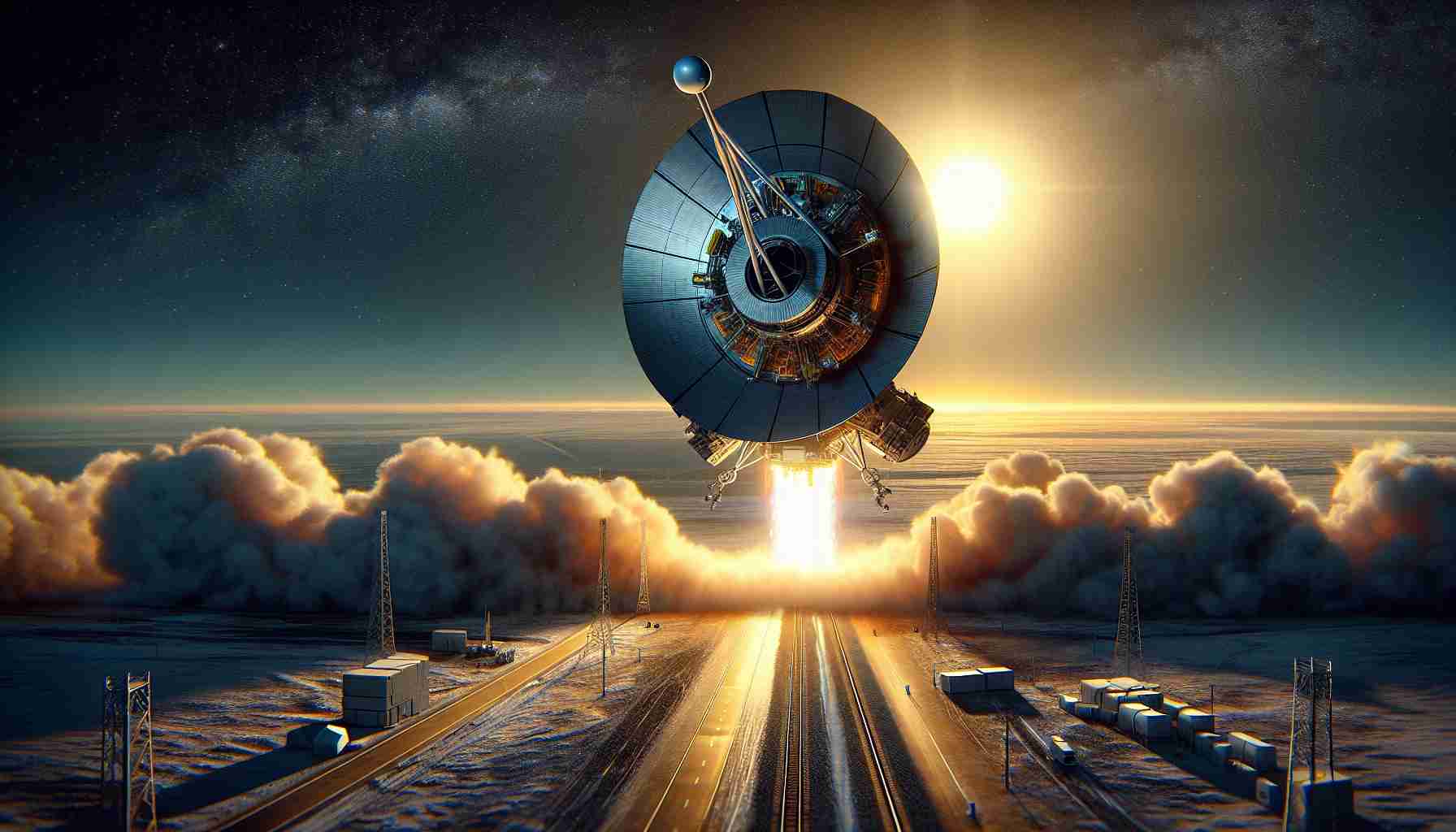
The National Oceanic and Atmospheric Administration (NOAA) has introduced groundbreaking imagery from its newly deployed space telescope, the Compact Coronagraph (CCOR-1). This high-tech instrument is currently aboard the advanced satellite, GOES-19, and marks a significant milestone as the first operational coronagraph designed specifically for continuous observation of the sun’s outer atmosphere, the corona.
Launched on June 25, CCOR-1 began its vital mission on September 19, focusing on solar phenomena such as coronal mass ejections (CMEs). These dramatic solar events are intense emissions of plasma and magnetic energy from the sun, which can interfere with the Earth’s magnetic field. The telescope employs an occulting disk to obscure sunlight, thereby achieving detailed images of solar storms hidden from direct view.
A recent capture taken on September 29 showcased a notable CME’s formation as it burst forth from the sun’s eastern side. NOAA officials pointed out the remarkable plasma activity evident in the imagery, which displayed the CME’s rapid movement, reaching thousands of miles per second.
CCOR-1 is set to transform space weather forecasting by providing immediate data, enabling NOAA to offer timely alerts regarding solar disturbances that might affect power systems and space missions. Although the recent CME was fortunately directed away from Earth, these enhanced monitoring capabilities signal a pivotal advancement in understanding and preparing for solar weather phenomena.
NOAA Launches Innovative Space Telescope to Monitor Solar Activity
The National Oceanic and Atmospheric Administration (NOAA) continues to lead the way in solar research with the recent deployment of its cutting-edge space telescope, the Compact Coronagraph (CCOR-1). This pioneering instrument, part of the GOES-19 satellite, promises to provide unprecedented insights into solar activity and its implications for Earth.
Background and Significance of the Compact Coronagraph
The CCOR-1 is the first operational coronagraph designed for continuous observation of the sun’s corona. Prior to its launch, solar monitoring relied heavily on infrequent images from other spacecraft. With CCOR-1, NOAA aims to revolutionize space weather forecasting by making real-time data readily available to scientists and the public.
One of the significant advantages of CCOR-1 is its ability to monitor solar phenomena continuously, allowing for the rapid detection of coronal mass ejections (CMEs) and solar flares. CMEs are known to create geomagnetic storms that can disrupt satellite communications, navigation systems, and even power grids on Earth. Enhanced observation capabilities mean that NOAA can act swiftly to issue warnings and recommendations for infrastructure protection.
Key Challenges and Controversies
Despite its promising capabilities, the launch of the CCOR-1 isn’t without challenges. One major concern involves the accuracy of forecasting solar weather. While improved imagery will undoubtedly enhance NOAA’s predictive models, the intricate nature of solar physics means that significant uncertainty still exists in predicting the precise impact of solar events on Earth.
Furthermore, there are concerns regarding the budget and funding allocated to space programs. As NOAA continues to expand its observational capabilities, it must balance technological advancements with budgetary constraints. This has led to debates about the allocation of resources between ongoing terrestrial weather monitoring and advancements in space weather prediction.
Advantages and Disadvantages
The advantages of the CCOR-1 are substantial:
– Real-Time Data Collection: Continuous monitoring provides timely data for predicting the impact of solar events.
– Enhanced Forecast Accuracy: Improved imagery can lead to better predictive models and alerts.
– Public Awareness: Increased visibility into solar phenomena can aid public understanding of space weather risks.
However, there are disadvantages that must be acknowledged:
– High Operational Costs: The development and maintenance of advanced telescopes like CCOR-1 require significant investment.
– Complexity of Solar Dynamics: Despite improved imagery, predicting solar impacts remains a challenging task.
– Potential for Over-Reliance: As agencies depend more on high-tech monitoring, there is a risk of underestimating the complexities of space weather.
Conclusion and Future Implications
The NOAA’s CCOR-1 is set to play a vital role in our understanding of solar dynamics and their impact on Earth. As it gathers more data, scientists hope to refine their understanding and forecasts of solar phenomena. The next few years will likely see significant developments in space weather prediction, directly influenced by the innovative technologies embodied in the CCOR-1.
For more information on NOAA’s initiatives and research on space weather, visit NOAA’s main page at noaa.gov.



